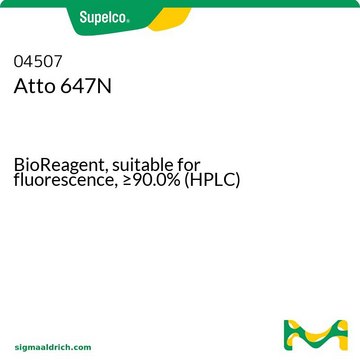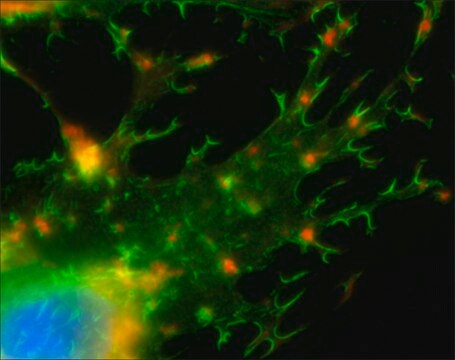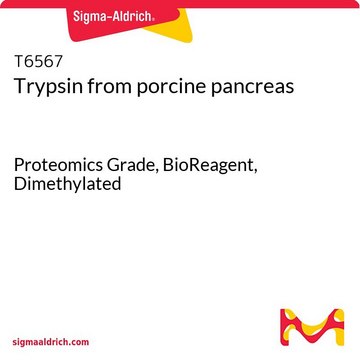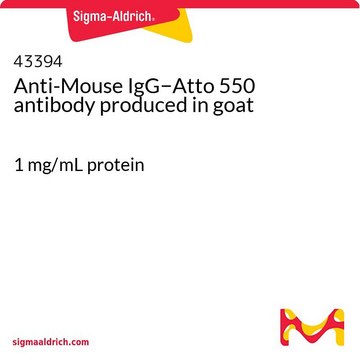65906
Phalloidin–Atto 647N
BioReagent, suitable for fluorescence, ≥80% (HPLC)
Sinonimo/i:
Atto 647N, Atto 647N-Phalloidin
About This Item
Prodotti consigliati
Nome Commerciale
BioReagent
Livello qualitativo
Saggio
≥80% (HPLC)
Produttore/marchio commerciale
ATTO-TEC GmbH
λ
in methanol
Assorbanza UV
λ: 640-646 nm Amax
Compatibilità
suitable for fluorescence
Metodo di rivelazione
fluorometric
Temperatura di conservazione
−20°C
Categorie correlate
Descrizione generale
Applicazioni
Caratteristiche e vantaggi
- StrongAbsorption.
- HighFluorescence quantum yield.
- HighPhotostability.
- MinimalTriplet formation.
- GoodSolubility.
- Excellent Ozone Resistance.
Note legali
Non trovi il prodotto giusto?
Prova il nostro Motore di ricerca dei prodotti.
Avvertenze
Danger
Indicazioni di pericolo
Consigli di prudenza
Classi di pericolo
Acute Tox. 1 Inhalation - Acute Tox. 2 Dermal - Acute Tox. 2 Oral
Codice della classe di stoccaggio
6.1A - Combustible acute toxic Cat. 1 and 2 / very toxic hazardous materials
Classe di pericolosità dell'acqua (WGK)
WGK 3
Punto d’infiammabilità (°F)
Not applicable
Punto d’infiammabilità (°C)
Not applicable
Dispositivi di protezione individuale
Eyeshields, Faceshields, Gloves, type P3 (EN 143) respirator cartridges
Scegli una delle versioni più recenti:
Possiedi già questo prodotto?
I documenti relativi ai prodotti acquistati recentemente sono disponibili nell’Archivio dei documenti.
I clienti hanno visto anche
Il team dei nostri ricercatori vanta grande esperienza in tutte le aree della ricerca quali Life Science, scienza dei materiali, sintesi chimica, cromatografia, discipline analitiche, ecc..
Contatta l'Assistenza Tecnica.









